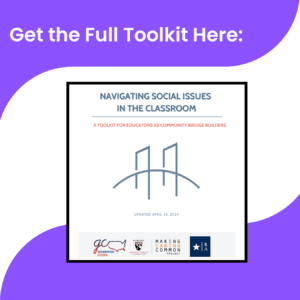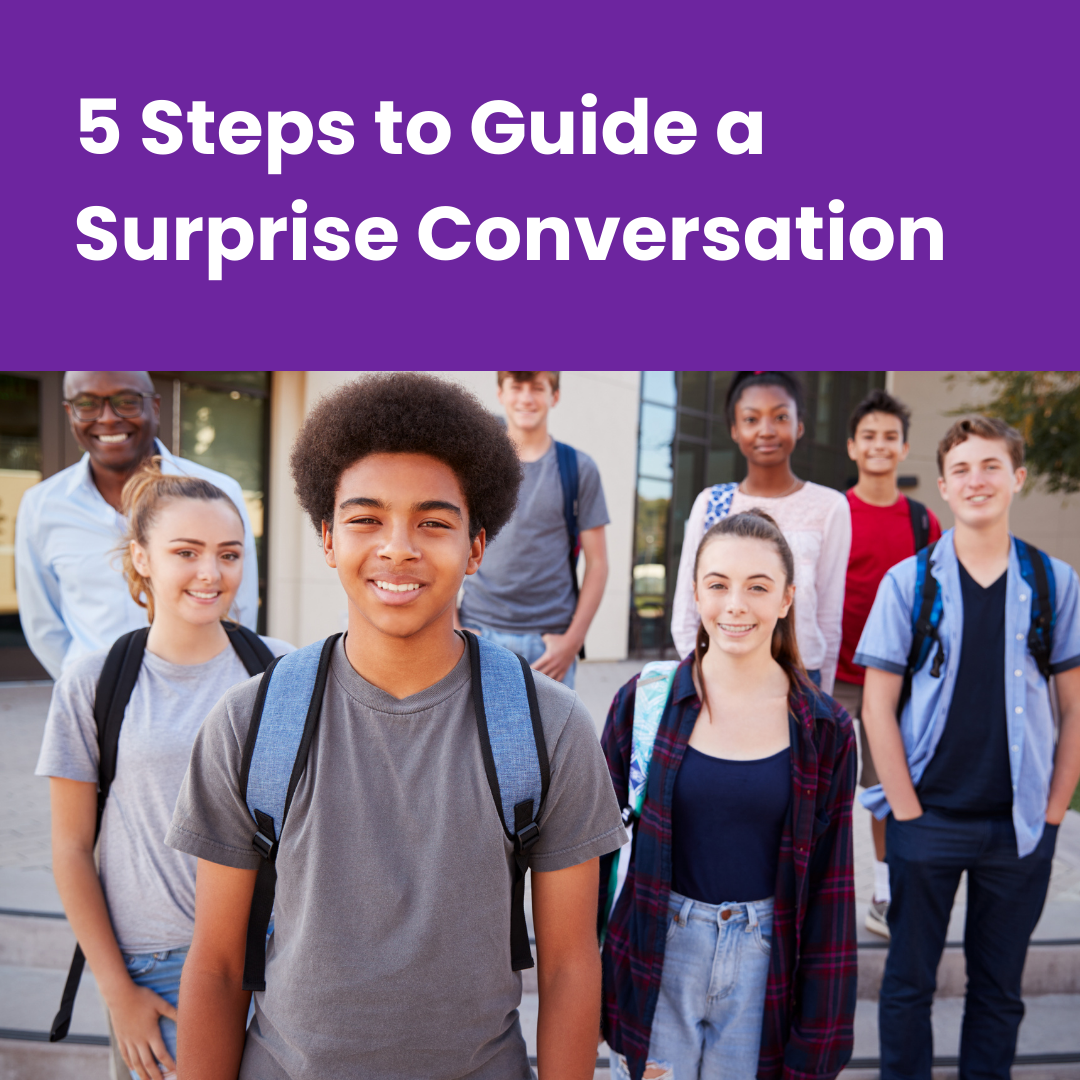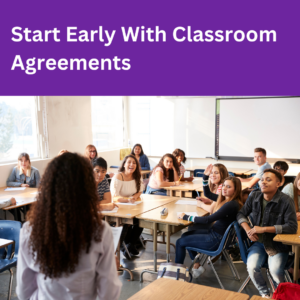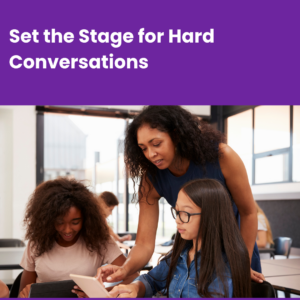
Start Early with Classroom Agreements
June 4, 2025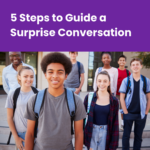
5 Steps to Guide a Surprise Conversation
June 25, 2025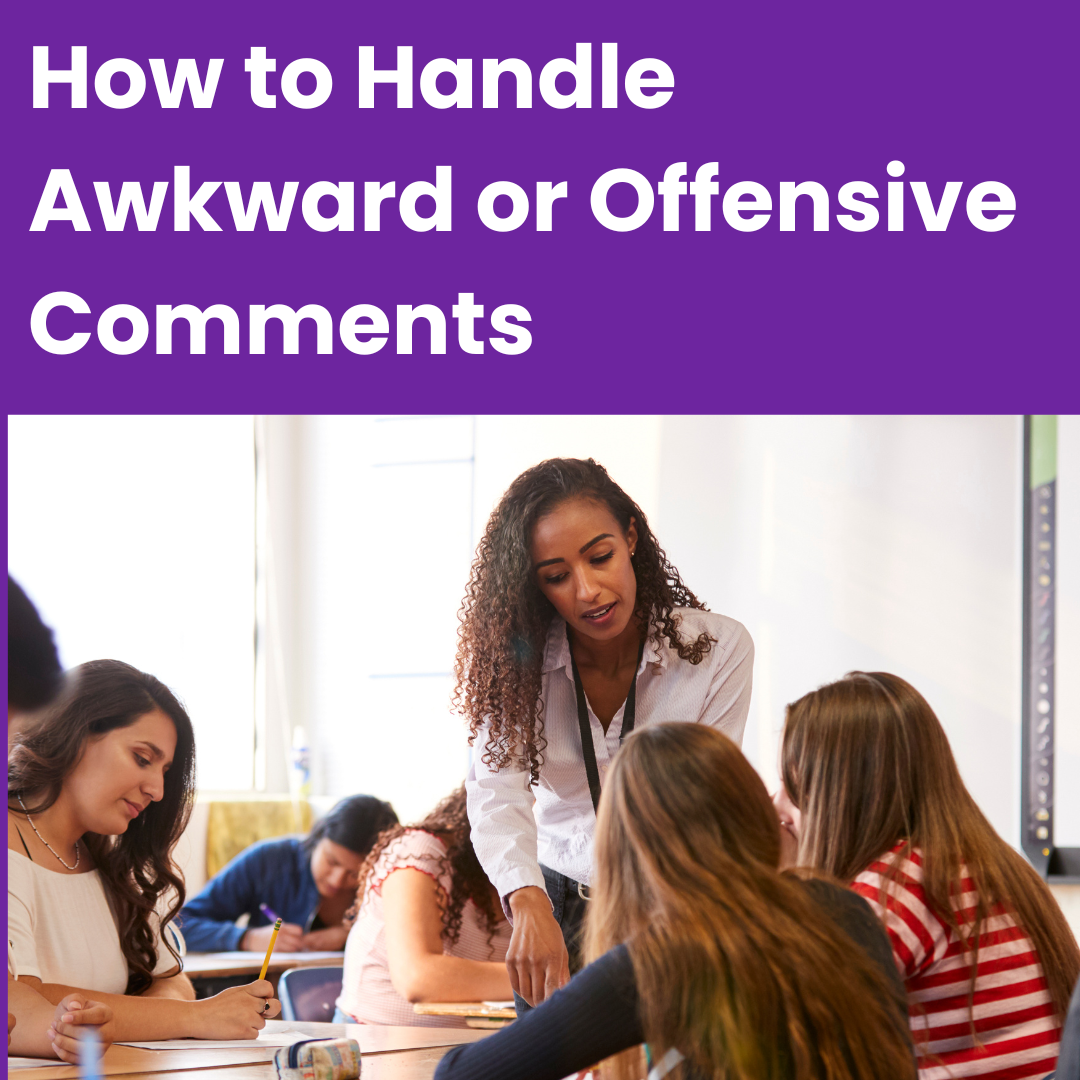
What to Say and How to Steer Students Back
Discussions in the classroom can quickly shift off course when students say something awkward, uninformed, or intentionally provocative. As educators, it's not just what we teach—but how we respond—that sets the tone for safe, inclusive dialogue. This guide outlines six common classroom behaviors that can disrupt conversation, along with simple, effective responses you can use in the moment.
The goal isn’t to shut students down—it’s to guide them back into meaningful engagement, curiosity, and care.
1. The Ignorant or Unaware Comment
When a student makes an off-the-cuff or uninformed remark, don’t ignore it. Pause and revisit classroom norms. Give the student a chance to clarify, correct, or reflect. Be sure to follow up with the student after class to discuss their comment.
In your own words, say
- "We’re not here to call people out—we’re here to call each other in.”
- “Let’s slow down and think about how that might sound to someone with a different experience.”
- “Let’s honor each other’s experiences without assuming we know them.”
2. The Contrarian
Some students engage to provoke, not to understand. Contrarians may argue simply to stir debate.
Redirect them toward asking questions or offering thoughts in a more constructive way. Help them recognize the difference between opinion and inquiry.
In your own words, say
- “What are we missing if we only look at this from one point of view?”
- “Can we hold multiple truths at the same time?”
- “This is a conversation not a conclusion.”
- “How might we stay connected even if we disagree?"
- "How can we build this conversation on each other's ideas?"
3. The Racist or Hate-Fueled Comment
If a student expresses harmful or extremist views, remain calm but firm. Reinforce class norms and community values. Frame the conversation around shared national identity or collective citizenship (e.g., “What does it mean to be part of a diverse democracy?”
Emphasize the collective classroom to be a space where everyone is able to learn and participate to improve each other.
In your own words, say
-
“That comment goes against the values we agreed on as a class—respect, dignity, and inclusion for everyone.”
-
“I want to pause here. Our classroom is a space for all students to feel safe, heard, and respected.”
-
“Let’s remember: we are preparing to be citizens in a diverse democracy. That means listening and learning across our differences—not reinforcing harmful beliefs.”
-
“This moment is serious. I need us to reflect on how our words can impact others, and how we can do better as a community.”
-
“We don’t allow language or views in this space that demean or dehumanize others. Let’s take a step back and re-center on why we’re here.”
4. Collective or Pluralistic Ignorance
This happens when students go along with an idea they privately question. Step in to correct misinformation clearly and quickly.
Provide factual clarity and offer a space for reexamination of assumptions. Don’t let false consensus stand unchallenged. As the teacher, be sure to model critical thinking and create a safe space for students to question group assumptions.
In your own words, say
- “This would seem like a good time for me to interject for a second and clarify a point that we seem to be building on that lacks merit.”
- “There is a spirit of going along with the group occurring and I want us to take a minute to reexamine a comment that was made that everyone seems to be assuming is correct.”
- “Let’s pause and check in—are we all truly in agreement, or are we just nodding along? It’s okay to voice uncertainty or disagreement.”
- “I’m noticing we’ve built a conversation around an idea that may not be accurate. Let’s step back and make sure we’re working from shared facts.”
5. Agenda Driven Students
These students are deeply passionate and fiercely advocate for causes. Their beliefs may be rooted in identity or personal experience.
Validate their passion while reminding them that the classroom is a place to understand—not to blame or exclude. Encourage space for all voices without asking anyone to compromise their values.
In your own words, say
-
“I can see how deeply you care about this—and that passion is important. Let’s also make sure we leave room for others to enter the conversation.”
-
“You’re raising a powerful point. Can we take a moment to explore how others might be experiencing this issue differently?”
-
“Your voice matters—and so does the process of hearing from many voices. Let’s practice holding space for multiple truths.”
-
“I appreciate how strongly you feel about this. In this space, our goal is to understand—not to assign blame.”
-
“Advocacy begins with listening as well as speaking. Let’s challenge ourselves to ask, not just tell.”
6. The Disruptors
Some students derail the discussion for fun or attention. Address them clearly and consistently. A firm redirect works. However, if multiple warnings are needed, remove them from the conversation and provide an alternative task. Keep expectations predictable.
Ask them to sit out of the conversation. The alternative task should run parallel to the conversation and be appropriate to the lesson.
In your own words, say
-
“I’m going to pause you there. This space is for serious conversation, and I need you to either engage respectfully or take a step back.”
-
“Right now, your comments are pulling us off track. If that continues, I’ll ask you to observe quietly instead.”
-
“This discussion matters—and if you’re not ready to participate constructively, I’ll have you work on an alternate task.”
-
“Let’s remember the expectations we set for dialogue. If you can’t meet them right now, it’s okay to take a break and rejoin when you're ready.”

